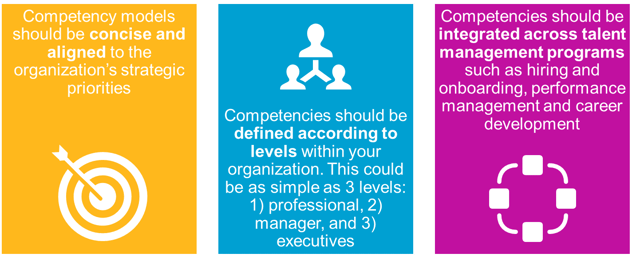Career advancement is important. Really important. In fact, both employees and companies rank career advancement opportunities among the top three drivers of attraction and retention (2016 Willis Towers Watson Global Workforce and Global Talent Management & Rewards Studies – U.S.).

Willis Towers Watson’s 2016 studies found that less than half of employees are satisfied with their organization’s career development process. A majority of employees are lacking effective career development discussions with their supervisors, helpful career planning resources and clear explanations for how to advance in their careers.
It’s important to get this right in order to attract and keep the best employees.
While there are technology and programmatic solutions for large organizations with larger budgets, small and medium size businesses can also find ways to improve their focus on career development, such as:
- Defining lateral and vertical career paths across jobs or functional areas to expand skills
- Beyond-the-job growth experiences (e.g., job shadowing, rotational assignments)
- Creating employee self-service tools (e.g., robust job profiles)
- Using competencies to bridge career development opportunities
A robust skills training program isn’t always enough to satisfy eager employees who want to grow their careers. Moving beyond skills to a focus on competencies can be a simple-to-implement, quick-win career development solution.
How can I use competencies to create an effective career development solution?
Competencies are defined behaviors that provide structure for career evaluations and can help describe development opportunities for employees. Here are a few best practices that relate to career development:

If your competency model is aligned with best practices, the link to career development becomes more manageable. Here are some ways that a best practice competency model can be used to guide effective career development in your organization:
- Use the scaled competency behaviors in your job profiles. Job profiles should describe the expectations of the role, including accountabilities and qualifications as well as behavioral or competency expectations by career level. Let’s use relationship building as an example competency. If relationship building is a key organizational competency, a job profile for an entry level role might describe a basic level of relationship building; a job profile for a supervisor role might describe behaviors to maintain relationships; and a job profile for a leadership role might describe behaviors to grow and expand relationships.
- Use scaled competencies to describe possible career paths. Use competencies to describe how employees can grow in their role or even how employees might use transferable competency behaviors to make lateral career moves. Following the same relationship building example, managers can use scaled competencies in career discussions with their direct reports to show the increasing level of contribution for relationship building and set goals that help the employee develop and demonstrate those next-level behaviors.
- Create developmental experiences based on competencies. Employees can grow skills and advance their careers through developmental experiences such as stretch assignments or special projects. Use your competency language to help clarify how employees will benefit from developmental experiences and how it will help grow their careers. For example, having a professional employee manage a key customer account can help develop a relationship building competency.
Our off-the-shelf effective career development competency solution includes examples of each behavior, demonstrated at three levels: professional, manager and executive. Small and medium sized businesses can take this competency content and layer it on the job functions and roles within their organization to help create an effective career development framework that helps attract and retain the very best people for your company.
Blog Contributor
Charleen Maher Ph.D., Willis Towers Watson Employee Engagement Software Product Leader
Her experience in consulting spans across talent, change management and rewards projects, including global communication and change management strategy, design and implementation of organizational and functional competency models, development of performance management processes and tools, executive, leadership and manager assessments, and career management. In her free time, she enjoys trying out fitness classes including barre, CrossFit, and yoga across New York City.




